The History of The Homestead, 73 High Street
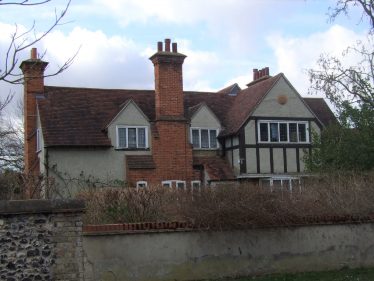




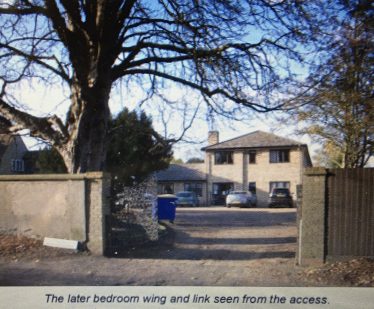
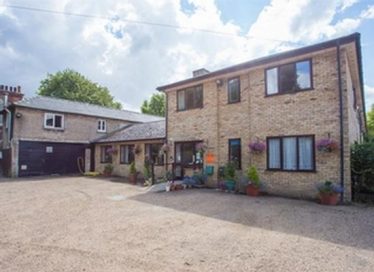
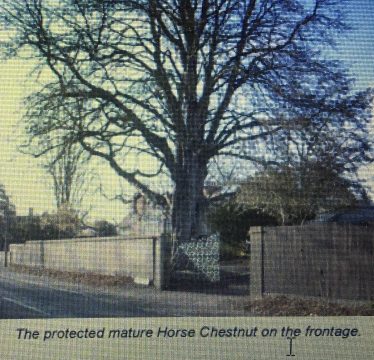

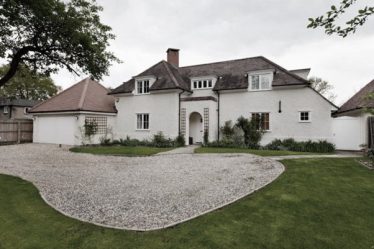
The Homestead, in Meldreth High Street, which originally stood in six acres of mainly orchards and meadowland, was built in 1904. It stands on the site of the former Court Farm which was owned by John George Mortlock on land opposite his own home, Meldreth Court. Court Farm was almost destroyed by a serious fire in 1901. The tenant, Arthur Edgar Morley, a cattle dealer and his family, were not at home at the time. After the fire they had to move away due to the extent of the damage. Their home had been a lath and plaster building with a tiled roof so it was unlikely to survive such a fire.
In the period between 1902 and 1904 Mr Mortlock, commissioned a well known London architect, Percy Morley Horder, to design a new dwelling on the site. Percy Horder was famous worldwide. In Meldreth he designed a two storey house with a pitched tiled roof in the ‘Arts and Crafts Movement’ style, popular at that time. The brickwork was roughened with rendering and there was some exposed timber framework. Internally there were many areas of decorative detail. The outcome was a fashionable ‘country house’ to be known as The Homestead which partnered in design and style, the house next door known as The Gables.
James Coomb was the first tenant of The Homestead (Kelly’s Directory 1904) and a newspaper advertisement was placed on his behalf on the 4th February 1904 in the London Daily News for a housekeeper: Housekeeper Re-engagement request required by lady. Business school or private. Practical knowledge of all duties –Mrs Bolton–Homestead, Meldreth.
On the 5th January 1907 an advertisement appeared in the Morning Star newspaper advertising the house again ‘For Let’. The contact was Capt. Ernest Carter: To Let, on Lease , Charming Cottage, situated in an ‘old world’ village, borders of Herts, 1 -1/2hrs from Town, 10 minutes of station, church and post office. Two reception rooms, lounge, hall with fireplace, four bedrooms, both with WC and excellent offices. Every convenience, excellent flower and vegetable garden, prolific orchard and meadowland in all over 6 acres. Good stabling and outhouses, Rent £50. Apply Captain C, The Homestead, Meldreth.
On the 1910 Land Valuation document for Meldreth, Col. E Carter was registered as being a tenant with Mr J G Mortlock registered as the owner of the house and land. The LVD still named the property as Court Farm. This is a common theme in the story of this property as it is called in various documents, either Court Farm or The Homestead in the 1920s and 1930s.
In 1912, a Canadian, Mrs Minnie Parlow, rented The Homestead from J. G. Mortlock as a retreat for herself and her daughter Kathleen. Kathleen Parlow was a young, world famous violinist and needed a place to rest in between her world tours. They immediately loved their Meldreth home and settled well into village life entertaining many of their friends at The Homestead. Their home was in an ideal location in the High Street, being only a 10 minute walk from the station.
Minnie and Kathleen found The Homestead very peaceful. They were keen gardeners and enjoyed their large garden. They tried to be self sufficient growing fruit and vegetables and spent much time at home during WW1 when they could not travel abroad. There are many references to this beautiful house and garden in the Kathleen Parlow archives held by The University of Toronto, Canada.
In 1916 Kathleen wrote in her daybook that they now owned The Homestead, after moving there as tenants in 1912. The Parlows were often hosts to local residents for regular afternoon teas and croquet in their pretty garden. Their guests included the Jebb, Mortlock, and Bindloss families as well as Miss Chamberlain who lived next door at The Gables. Kathleen recorded all these names in her daybook. According to a friend, Minnie and Kathleen lived frugally after the war as their income had significantly decreased during and after WW1. They did not have any electricity in the house for many years, as experienced by a visitor in 1919 when he had to go upstairs to bed carrying a candelabra! A separate page on this website includes details of Kathleen Parlow’s time in Meldreth from 1912 to 1925.
The Homestead was sold again in 1925 when the Parlows returned to the USA. It was bought by the British palaeontologist Henry Woods and his wife Ethel, formerly Ethel Gertrude Skeat, a stratigrapher, palaeontologist and geologist. Both worked at Cambridge University.
Around 1926 Ethel’s good friend, Beatrice E. Clay, came to live in a cottage (possibly Kathleen Parlow’s old studio in the grounds of the Homestead). Beatrice was an old friend of Ethel Skeat with their friendship lasting for over 50 years. In 1891 they shared lodgings as teachers in Penarth, Wales. Sadly Ethel died in 1939. Henry Woods remained in The Homestead along with Beatrice Clay until 1951. They employed a paid housekeeper, Maud Thomas and a cook called Kathleen McMurrough. Beatrice had been a keen writer and became locally recognised for her historical writing about the village of Meldreth in 1942. She had also been a children’s writer in her earlier life. Henry Woods died in 1951 and Beatrice Clay in 1952.
In 1952 The Homestead was put up for sale and bought by William Ilsley and his wife Christine, from Harston. They wanted to run a nursing home for elderly ladies and found The Homestead to be the ideal site. They quickly achieved their aim and it opened as ‘The Homestead, Nursing Home’ later that year. It is remarkable that the site has remained as a residential home ever since then.
A newspaper advertisement on 8th August 1952 shows how quickly they were able to open it: Rest Home for elderly ladies, charming house, extensive gardens, central heating, own produce, personal attention. Apply Mrs Ilsley, The Homestead, Royston, Herts.
In 1985 The Homestead was registered as a Grade 2 Listed Building. However it was known at the time of listing there was going to be a planning application by the Ilsleys to South Cambridgeshire District Council in 1986 for a rear extension to the right of the house. This was all taken into account in the planning application. There was some debate about the plans as The Homestead house was standing within the Meldreth Conservation area and it was thought that the proposed plans were not in keeping with the area. Eventually this was resolved and permission was granted and the building was completed in1988 to house 17 more residents.
William and Christine remained in The Homestead house but later in 1998 had a house built next door. William was a keen gardener and had a wonderful greenhouse in his garden at The Homestead. He was known to grow unusual plants which he sometimes supplied to Kew Gardens.
William and Christine Ilsley sold the nursing home in 1998 to David and Beverley Grace. Christine died in 2001 and William in 2002, after nearly 50 years dedicated to caring for the elderly, in Meldreth.
In 1998, when David and Beverley Grace took over the nursing home they changed its name to Maycroft Nursing Home. They made an application to South Cambridgeshire District Council to again extend the residential area. The extension, connected to the original house, included 17 bedrooms and was modern in design. It had a corridor down the length of the extension with rooms leading off, mainly facing the garden. The old Homestead house became a laundry and offices. Despite having retired, William Ilsley was involved in the design of the extension with David Brace. The architect was a Mr Chapman from Melbourn.
Maycroft Nursing Home was often included in Meldreth village activities and residents participated in various events. They even had their own test pit in the village’s archaeological digs in 2014.
Various healthcare companies have run Maycroft since 2006. In 2011, 2012 and 2014 new plans were submitted to South Cambridgeshire District Council including demolition of the old extensions and the addition of between 15 and 26 various extra bedrooms. It took three years for the final plans to be passed.
In 2017 building work was able to begin and the new Maycroft Care Home is now a beautiful care home specialising in dementia care for 25 residents. It is now owned by Advinia Health Care.
Sadly the old Homestead building is no longer habitable. However, some of the rooms still retain their original decor and so does the exterior of the house. Hopefully it will be restored in the near future due to its listed status.
Plans were passed in 2017 to turn The Homestead house into a five-bedroom semi independent living accommodation. If this goes ahead, the interior will be altered to fit the five bedrooms. It is proposed that the original front door will remain but not be used and a new entrance will be made at the rear of the building. The large horse chestnut tree will remain at the front of The Homestead. It had a Tree Preservation Order (TPO) placed on it in 1966, together with three TPOs on trees in the well laid-out gardens at the rear.
Meldreth looks forward to The Homestead being returned to looking like a charming country house again.
See also The Homestead, 73 High Street: Exterior and Interior Design





No Comments
Add a comment about this page